Starlink Status Report - September 2023This Starlink status report covers the latest changes and updates to Starlink satellites.
Major changesThere are major changes in the analysis of Starlink satellites. The explanation is a bit longer and I have to go back a bit further into the past for it: when I started the analysis, 2019/2020, there was only one operational orbit. Later, the groups (Group 2, Group 3, and Group 4) were added. I made the operating orbits 2 to 4 out of these. Problematic from the beginning were the special cases, such as the transporter satellites. Some time ago the groups 5 and 6 were added. These form a common operating orbit. Completely new is Group 7, the satellites form (presumably) a common operational orbit with Group 1. In addition, the remaining Transporter Starlinks form a common operational orbit with Group 3. Last but not least, almost 20 satellites from Group 4 have "defected" to Group 1. In a nutshell: This does not work anymore. The solution of this issue results in a (technically) bigger change: From now on I call the groups (Group 1 to Group 7) start groups. With the word operational orbit I designate from now on the orbit (the altitude) of the satellites. Here only satellites in an orbit are counted, burned up satellites are not counted, otherwise this part would get out of hand.
As special features are added that with this new technology the
TinTin satellites can be detected as well, the satellites burned up during the
solar storm are now completely detected, new satellites are usually already detected after approx.
24 hours, and the burning up is registered
without delay. New satellites are not yet classified (rising, sinking, defective) in the first days, but are displayed with the color yellow.
OverviewStarlink currently consists of ~5200 satellites, of which ~4100 are operational and ~360 have already deorbit.
Operating orbitsThere are currently 5 operating orbits, among which the satellites are distributed.
Start GroupsSatellites are launched in groups. Currently there are 7 launch groups and additional special groups.
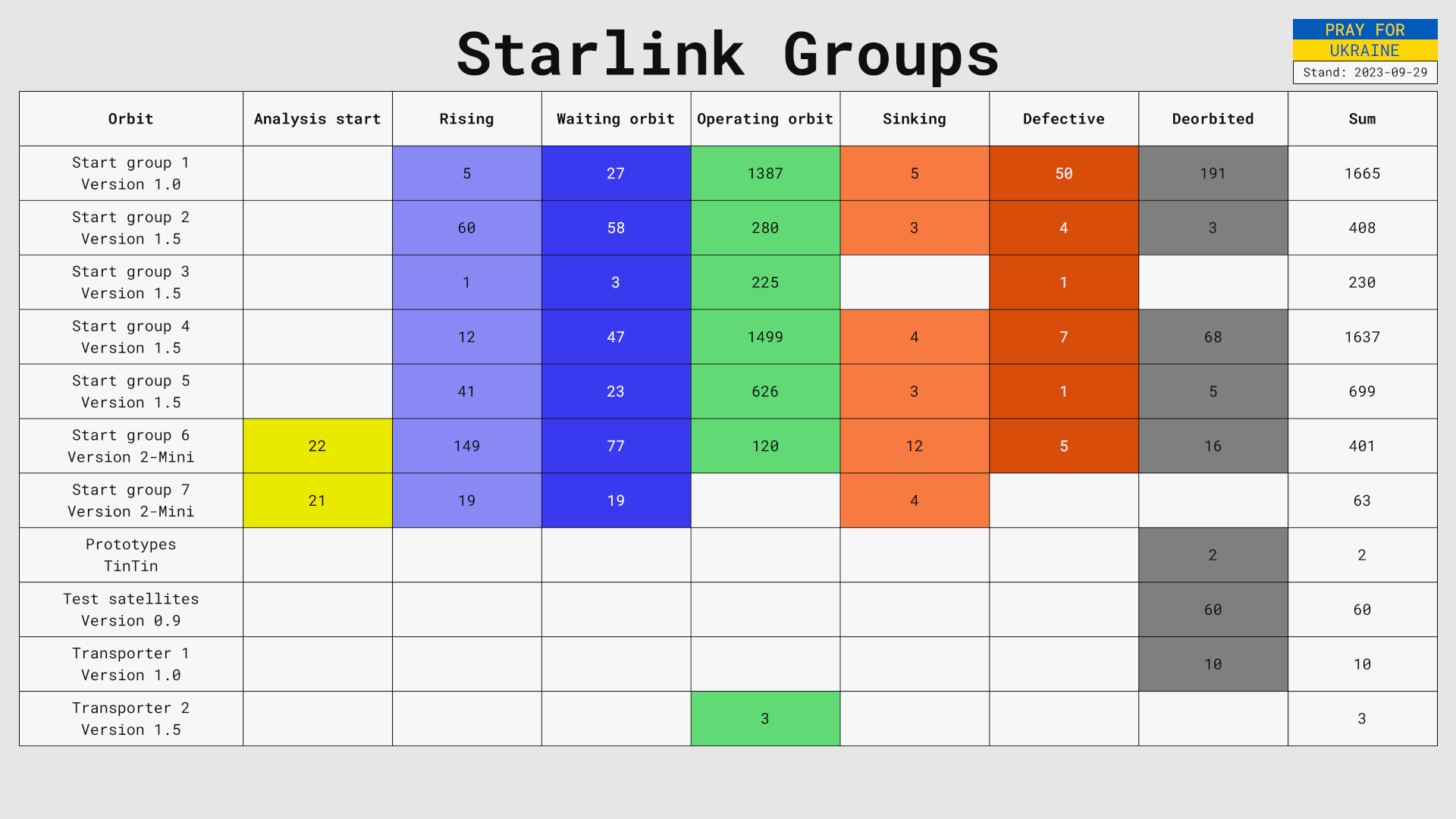
Operating orbit 540
Operating orbit 540 is currently quite complete with Group 4 satellites.
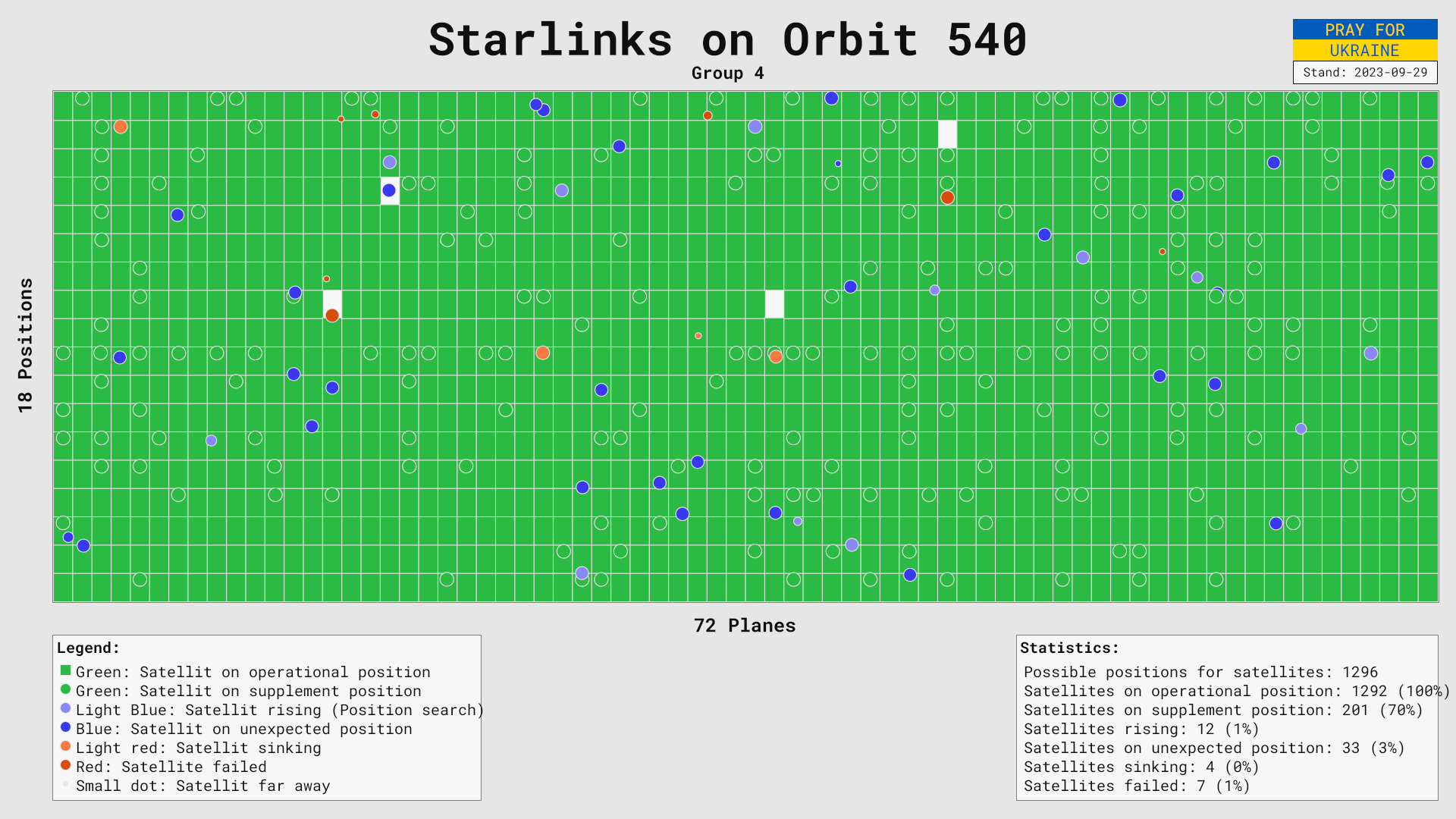
Operating orbit 547
Operating orbit 547 is the first operating orbit equipped with the version 1.0 satellites from Group 1. It is currently supplemented by Group 7 satellites.
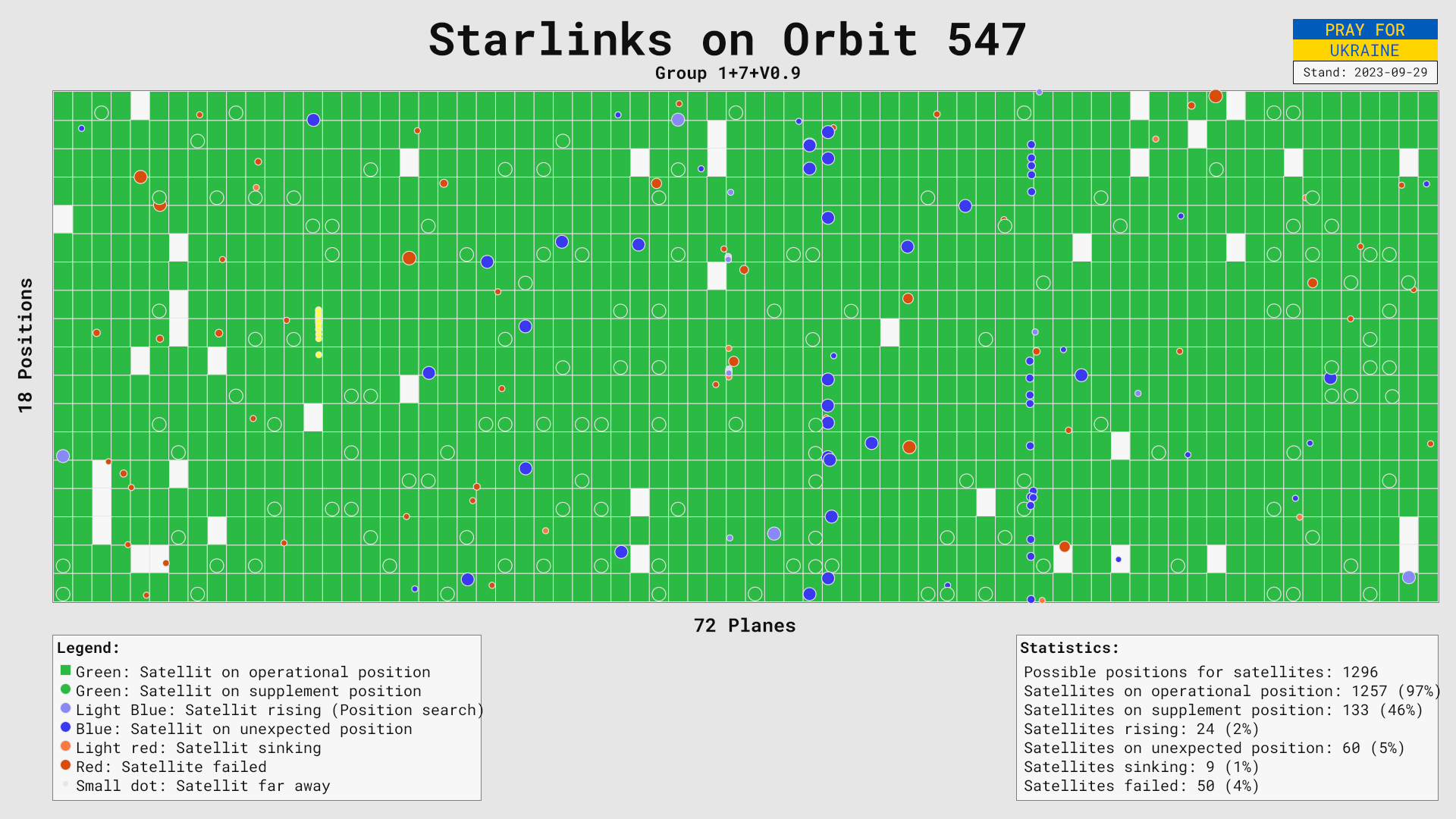
Operating orbit 559
Operating orbit 559 is currently being equipped with Group 5 and 6 satellites.
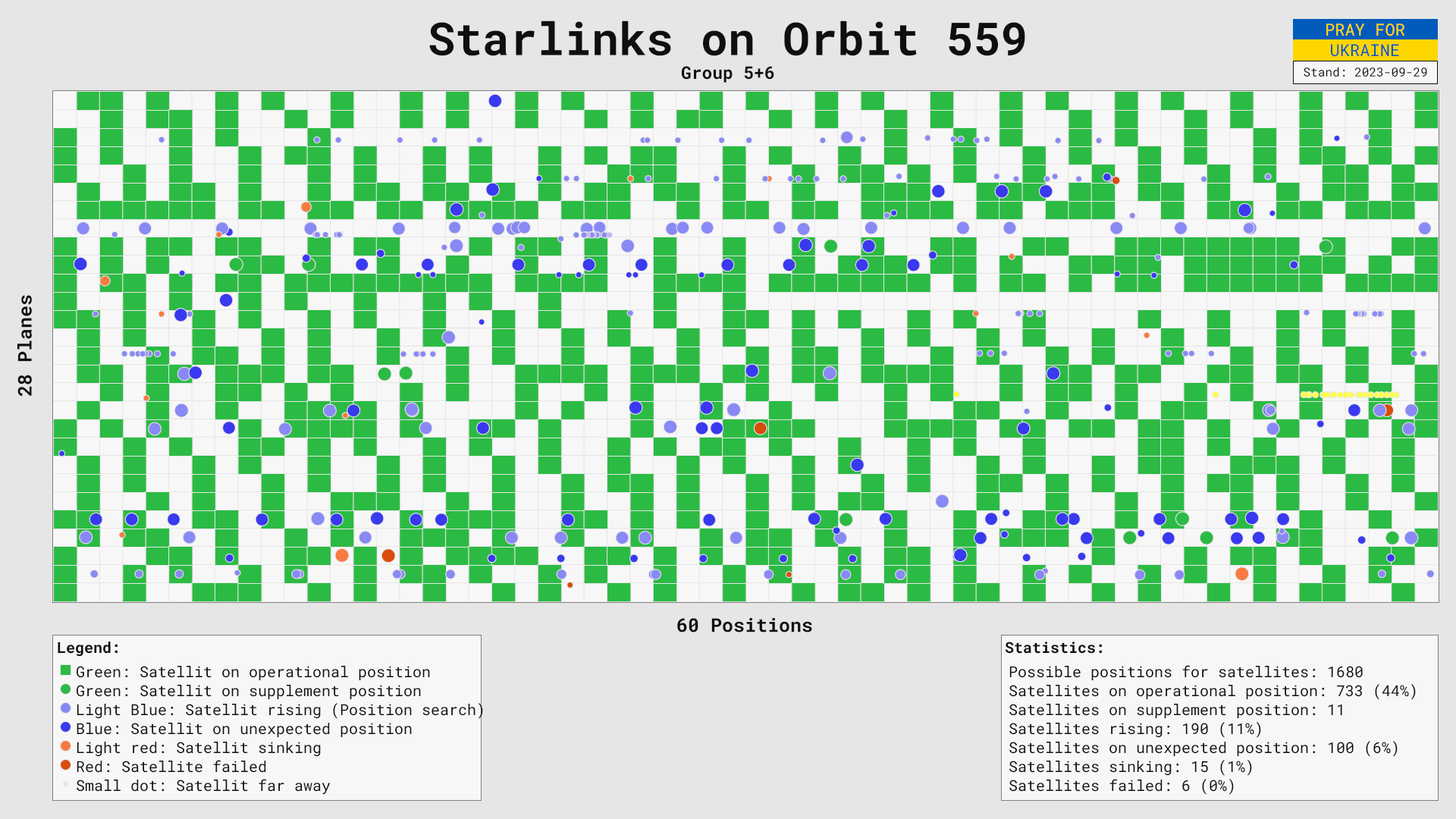
Operating orbit 563
Operational orbit 563 consists of Group 3 satellites and the remaining transporter satellites.
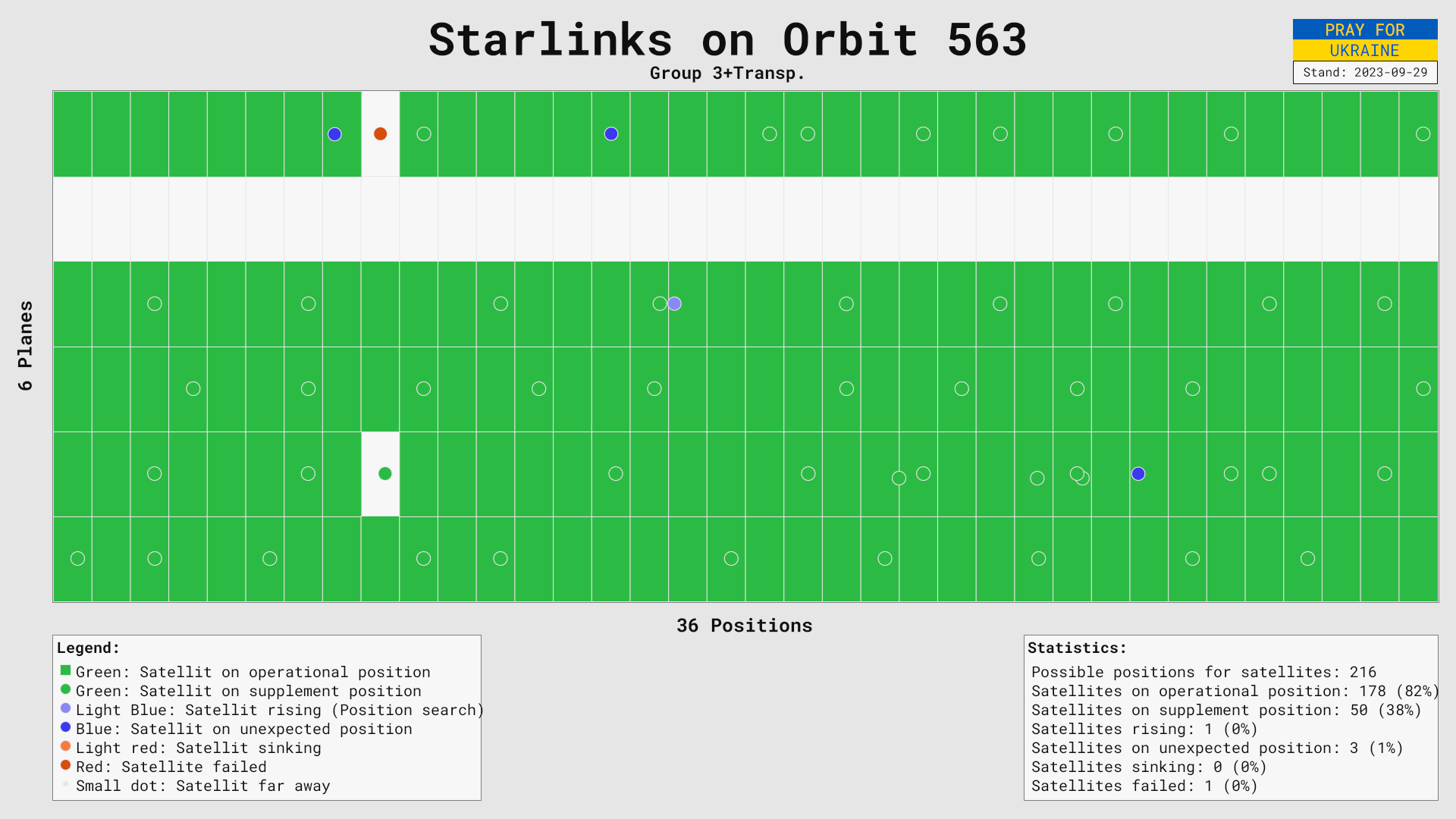
Operating orbit 572
Operational orbit 572 consists of Group 2 satellites.
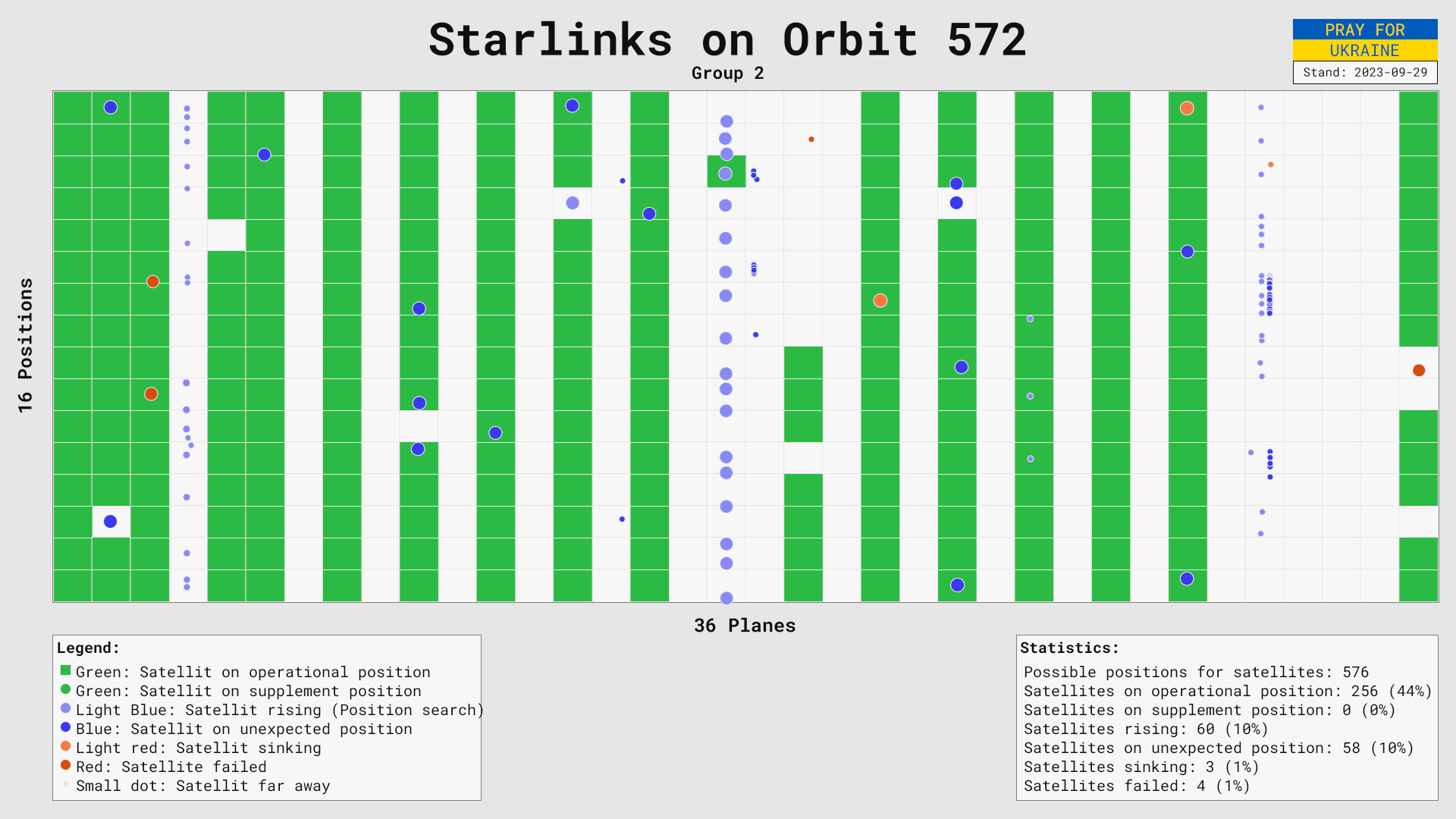
Selected defects
I have selected individual Starlinks for an overview of how quickly Starlinks deorbit, when they are defective and fail. If this happens after launching in space, they deorbit within a few weeks. However, if a satellite fails on the operational orbit, the deorbit correspondingly longer.
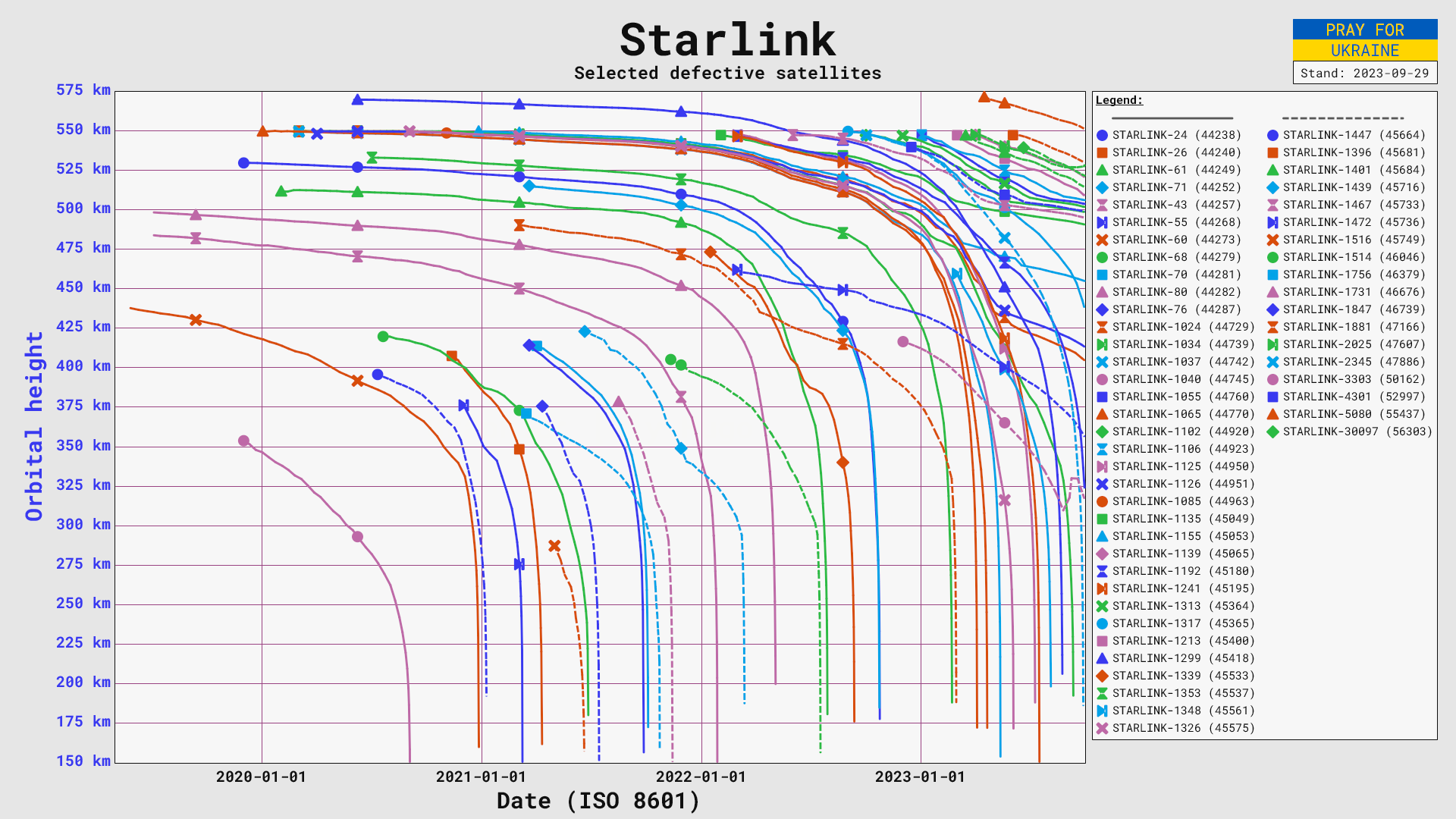
The latest rocket launches
In the following diagram you can see the apogee in red, the perigee in green and the orbital altitude in blue for all Starlink launches of the last 8 weeks. Sometimes there are 1 or 2 satellites which do not activate their propulsion and deorbit after a few weeks.
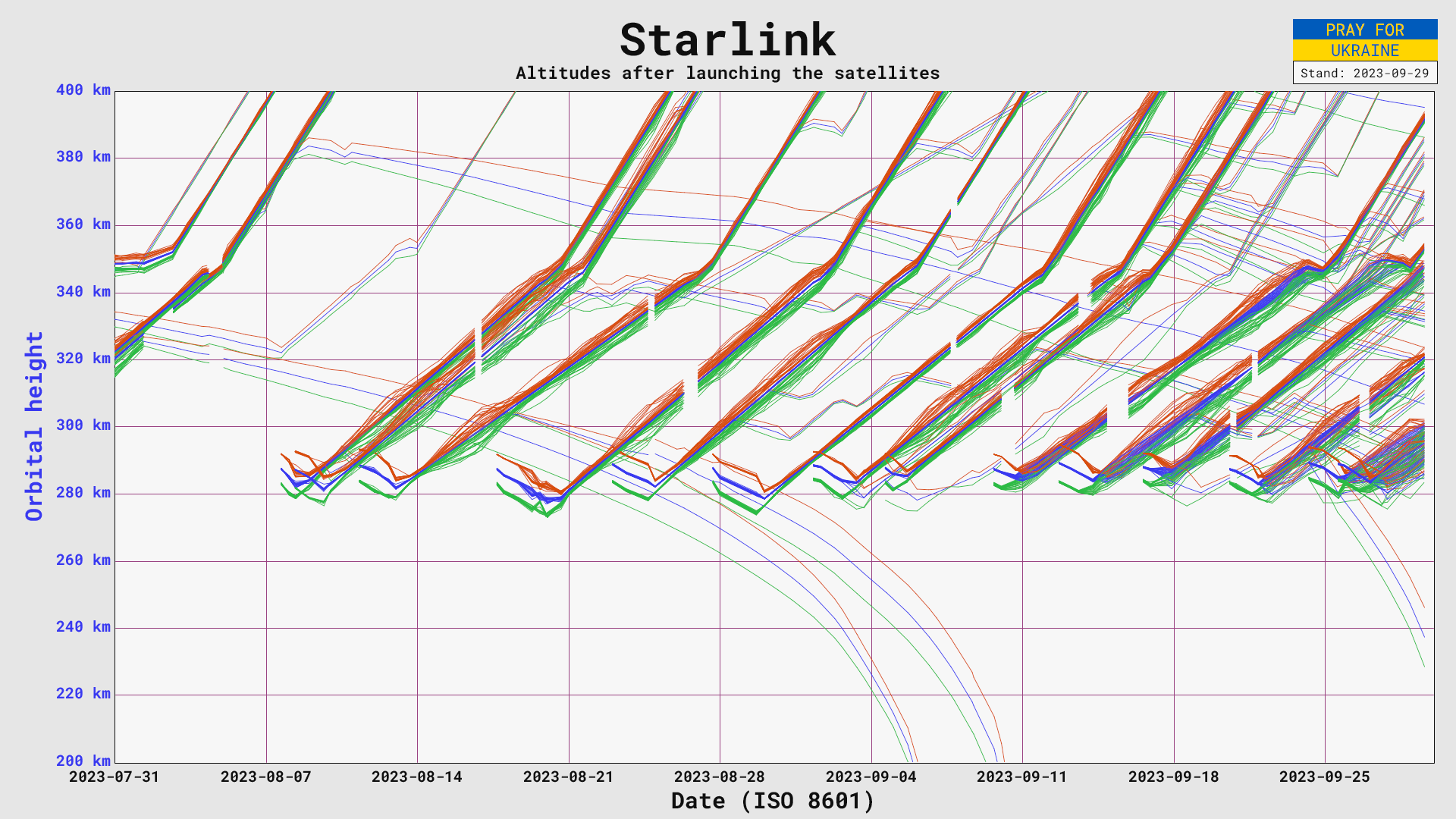
|
